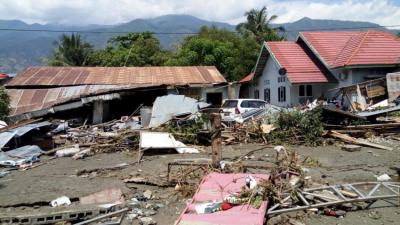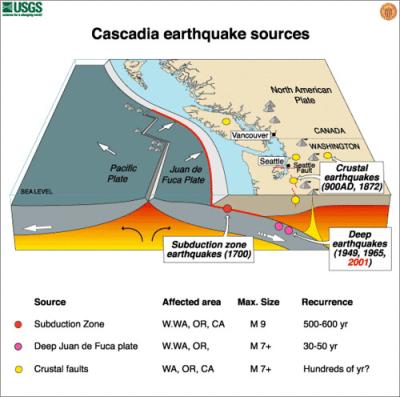
The threat of earthquakes locally originates from the Cascadia Subduction zone, a geological fault line lying a short distance off the coast of Oregon and Washington.
Geological evidence shows that the Cascadia fault has generated severe earthquakes at more or less regular intervals of 200 to 500 years, with the last quake occurring in 1700. These quakes not only may register 9.0 or higher on the Richter scale, but also generate tsunamis, large ocean waves that can inundate coastal areas. Tsunamis are often 25-40 feet high, but can reach 100 feet depending on local conditions.
Earthquake planning and preparation for your home
- Fasten shelves securely to walls.
- Repair defective wiring and gas lines – these are potential fire risks.
- Repair deep cracks in ceilings or foundations.
- Identify safe places indoors and outdoors, such as under sturdy furniture, against an inside wall, and away from windows or items that could fall.
During an earthquake
- Drop, cover and hold – Drop to the ground, take cover under a sturdy table or other piece of furniture, and hold on until the shaking stops.
- Use a doorway only if it is close and you know it is strongly supported.
- Stay inside until the shaking stops.
- If outdoors, stay there, and move away from buildings, utility lines and streetlights.
After an earthquake
- Evacuate to high ground if you are in tsunami inundation zone
- Clean up spilled medicines, bleach, and gasoline and other flammable liquids immediately.
- Check for gas leaks.
- Stay away from damaged areas.
- Expect aftershocks, which may last for days or weeks
Videos and Public Service Announcements
"How to Protect Yourself During an Earthquake"
Articles and Documents
"The Really Big One" (New Yorker)
Tsunami Facts & Information
Websites





